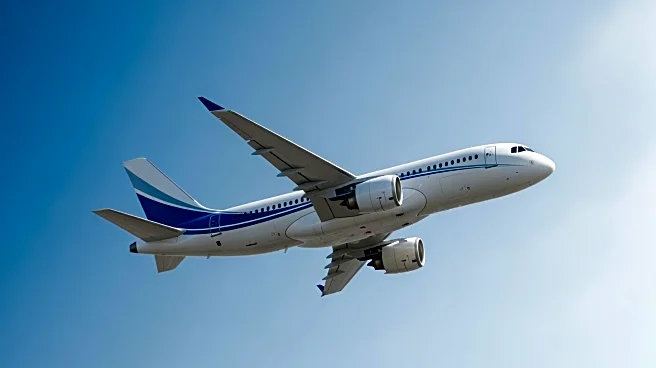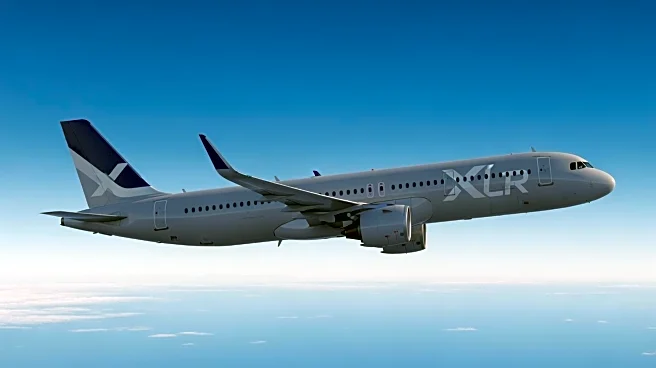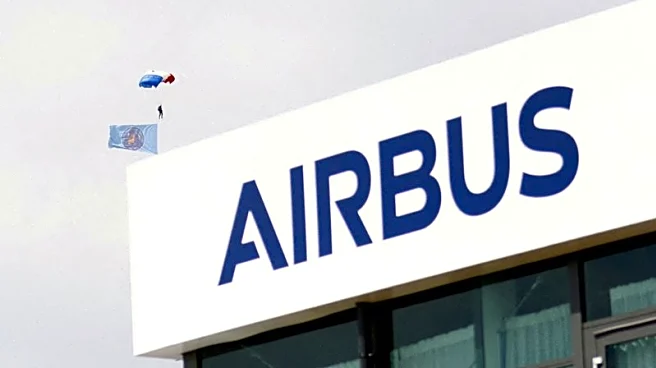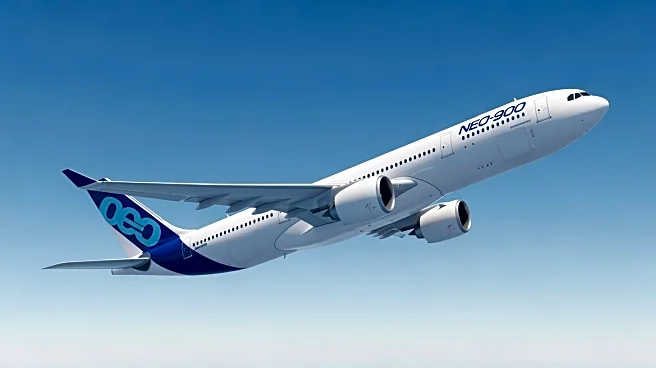What's Happening?
LATAM Airlines Group, the largest airline company in South America, is set to expand its network by introducing new Embraer 195-E2 jets into its fleet. This move will enable the Chile-based company to add 35 new destinations across South America, supplementing
the 130 destinations it currently serves. LATAM Group CEO Roberto Alvo highlighted the potential of these jets to connect smaller cities, which are often isolated due to challenging geography and lack of highways. The company has placed an order for 24 E2s and plans to operate them from 2026 onward. Additionally, LATAM has orders for 15 Boeing 787-9s and over 80 Airbus A320/321neos, with plans to receive five A321XLRs from Air Lease in 2027. Despite these expansions, Alvo expressed concerns over ongoing engine delivery delays and reliability issues, particularly with Pratt & Whitney engines on the A320s.
Why It's Important?
The expansion of LATAM Airlines' routes is significant for enhancing connectivity in South America, particularly for smaller cities with limited transportation options. This development could boost regional economic growth by facilitating easier access to markets and resources. However, the persistent engine issues pose challenges to operational efficiency and reliability, potentially impacting LATAM's ability to fully capitalize on its fleet expansion. The airline's investment in new aircraft underscores its commitment to growth, but the unresolved engine problems highlight vulnerabilities in the aviation supply chain that could affect service delivery and customer satisfaction.
What's Next?
LATAM Airlines plans to begin operating the new Embraer jets in 2026, with further expansions anticipated as the company receives additional aircraft orders. The airline will continue to monitor and address engine reliability issues, working closely with manufacturers like Pratt & Whitney and Rolls-Royce to improve performance. As LATAM expands its network, it may face increased competition from other regional carriers, prompting strategic decisions on route optimization and service offerings. Stakeholders will be watching closely to see how LATAM navigates these challenges while pursuing growth.
Beyond the Headlines
The introduction of new aircraft and expansion of routes by LATAM Airlines could have broader implications for the aviation industry in South America. It may encourage other airlines to invest in fleet modernization and explore underserved markets, potentially leading to increased competition and innovation in the sector. Additionally, the ongoing engine issues highlight the importance of robust supply chain management and collaboration between airlines and manufacturers to ensure reliability and efficiency in operations.















